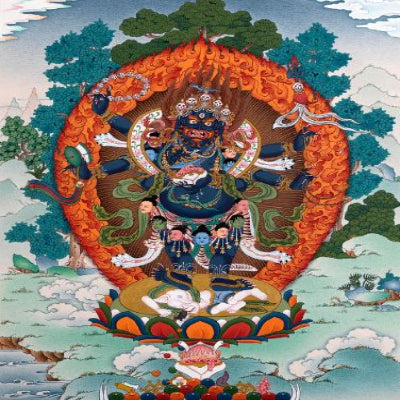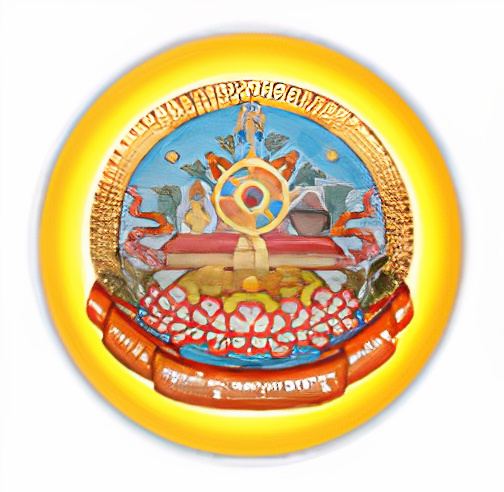Sed Gyued Monastery
Gonpo Tordup མགོན་པོའི་གཏོར་སྒྲུབ།
Gonpo Tordup མགོན་པོའི་གཏོར་སྒྲུབ།
Couldn't load pickup availability
The Swift-Acting Lord of Pristine Awareness
Prayer ritual for the protector deity of the monastery. (Six Armed Mahakala).
The Iconography of the Six-Armed Mahakala
Mahakala, among his other manifestations, is more popular for his six-armed form. This form is black and blue, which is supposed to symbolize his changeless Dharmakaya nature. He has three eyes that represent the past, present and future and his clear comprehension of time. A crown of five skulls rests on his head, where the skulls represent the five poisonous delusions of anger, desire, ignorance, jealousy, and pride. These delusions are ultimately transformed into the wisdoms of the five Buddha families.
The Protective Functions of the Six Arms and Other Attributes
Mahakala is a protective deity, so he holds various ritual implements in his six hands to carry out his protective functions. The first right-hand holds a curved knife that cuts the ego attachment, and the left-hand holds a skull cup that shows his subjugation of evildoers. This combination of the knife and the cup is the tantric union of method and wisdom as it represents the inseparability of bliss and emptiness.
The other right hands hold a rosary of skulls and a damaru that symbolize his continuous activity for the benefit of beings, and the control over all classes of Dakinis respectively. It is recognized that the damaru also makes the sound that arises from our ignorance. The remaining left hands hold a trident and a lasso, where the trident symbolizes his power over the three spheres of existence, and the lasso with which he binds those who break their vows. The trident also represents the destruction of the three root delusions, and the lasso is that which reigns in the caprices of the confused mind.
The left leg is outstretched in Mahakala’s iconography, like that of some deities. The right leg is bent and it represents his accomplishments for the benefit of others and oneself. And much like other wrathful deities, he tramples on another deity, an elephant-headed one that symbolizes his destruction and dispersal of great obstacles. The elephant-headed quality of the trampled deity can represent wealth and otherworldly desires, and Mahakala’s domination over the deity shows the enlightened transformation of such a worldly trait.
Mahakala takes his stance upon a sun disc that symbolizes his illumination of the darkness of ignorance. This disc itself rests upon a lotus, which shows his undefiled purity. His powerful activities in consuming all the neurotic states of mind are demonstrated through the pores of his body. Clad in a tiger skin loincloth, a snake necklace adorns him as he holds an elephant skin. These three attributes represent Mahakala’s purification of desire, anger, and pride. Mahakala’s possession of the complete qualities of a fully enlightened Buddha can be seen in his other ornaments, by virtue of elaborate imagery.




